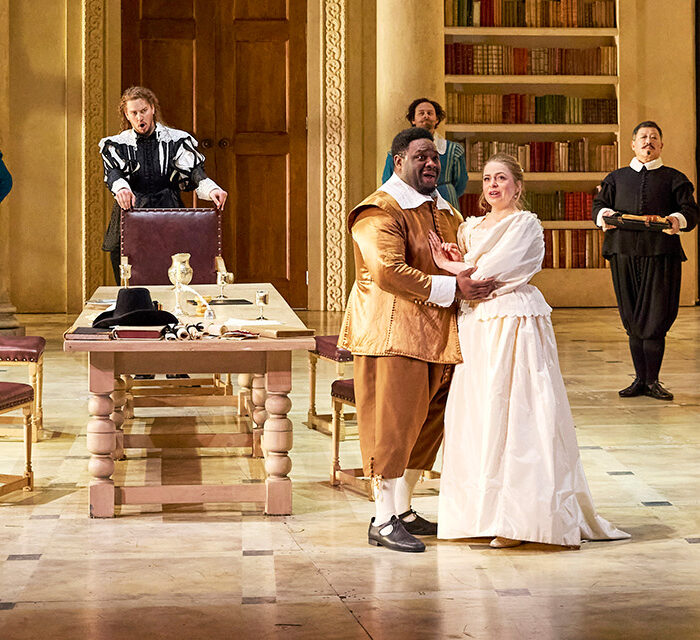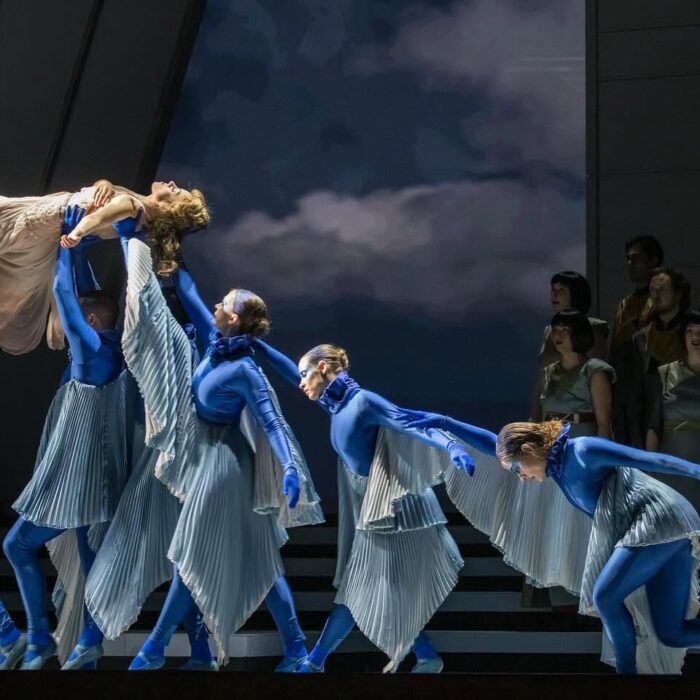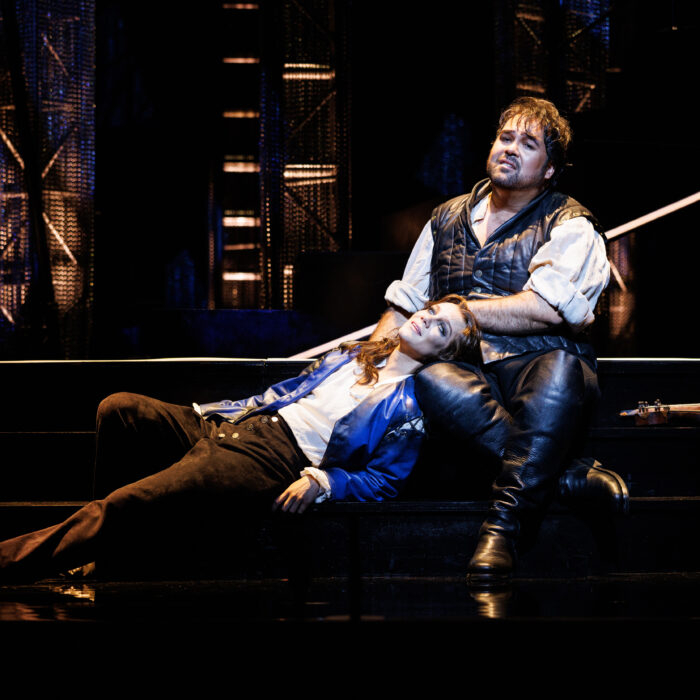
Wexford Festival Opera 2024 Review: The Elixir of Love
A Production With The Community At Its Heart
By Alan Neilson(Photo: Padraig Grant)
Set just off the waterfront in Wexford town centre is The Grain Store, an old, restored warehouse, which last year hosted the festival’s first community opera. It is a project that enables the local population to engage directly with the festival by creating and presenting its own production with the help of workshops that take place throughout the year. Last year’s selected opera was Puccini’s “Gianni Schicchi, in which all the performances sold out almost immediately as the local residents flocked to see the work put together by their family and friends. Although the soloists are professional singers employed by the festival, the chorus and actors are local amateurs.
For this year’s festival, the chosen opera was Donizetti’s “The Elixir of Love” in an abridged version lasting approximately 90 minutes with a revised and updated libretto written by Timothy Knapman.
The scene is moved to a bar owned by Adina, which unsurprisingly is called “Adina’s.” Nemorino, who is a bit of a wimp, is one of her employees and is hopelessly in love with his boss. She shows no interest in him and is more interested in Belcore, who runs a local gang involved in an array of shady dealings, including protection. Dr. Dulcamara is a wheeler dealer conman who will sell you anything you need, including weed and love potions. Giannetta is another of Adina’s employees. Everything was thus set up for an hour and a half of hijinks, fun and laughter. Knapman’s libretto was really well designed as it not only retained the basic plot and spirit of Felice Romani’s original, but it also ensured that there were substantial roles for the community, who played the bar staff, customers and gang members, which contained both choral and individual spoken parts.
A Unique Experience
On entering the warehouse, everyone was handed a handful of banknotes, which were to come in useful for buying drinks from ‘Adina’s.’ The seating area was made to look like the inside of the bar, with tables and chairs around which the audience sat and for whom waitresses would serve drinks during the performance. Interspersed among the audience were members of the cast, who would occasionally interact with the soloists, and at one point they got up and started dancing in the main aisle. The characters would often enter from the opposite side to the bar and walk along the main aisle between the tables, which was where most of the action occurred. It was all very busy, energetic and great fun.
The bar at the far end of the area was nicely positioned so that it was easily seen by everyone in the room, and with its colorful design and neon sign reading ‘Adina’s’ on the wall, it was easy to imagine that one was actually sitting in a real bar. The costumes were simple but perfectly suited to the characters: all the waitresses, along with Adina herself, wore a white T-shirt with Adina’s printed in red across them; Belcore was dressed as a typical thug with boots and jeans, as were his gang of female soldiers, who also sported sunglasses to look tough; poor Nemorino was made to look weak with an insipid costume, while Dr. Dulcamara and his sidekick were given very colorful attire to exaggerate their larger-than-life characters.
For the final scene, the audience was escorted down to a large room below, which acted as Adina’s cellar, where it stood to watch the final ten minutes play out amongst the beer barrels.
Professional Singers and the Community Combine for a Fine Musical Performance
The performance of the local people was superb; they engaged with their roles with a fresh exuberance that provided the performance with real energy and not little skill. Belcore’s gang of soldiers strutted around, enjoying their chance to pose as aggressive thugs and rough up Nemorino; the waitresses flitted around and joined the general hubbub while the ‘hidden’ actors posing as customers did a fine job in interacting with the main characters. Together, they also created a strong, vibrant choral body.
Five professional singers were engaged in the solo roles to support the project, all of whom slipped into its communal spirit seamlessly and produced well-defined and boldly sung performances.
Tenor Rory Lynch went a little too far with his Mr. Nice guy portrait of Nemorino, turning him into a bit of a wimp, with whom it was difficult to have any sympathy. Vocally, however, he was far more convincing with a lyrically pleasing performance, which successfully caught his feelings for Adina.
Soprano Maria Matthews was a feisty, assertive Adina who voiced her emotions forcefully and managed to capture the behavior and attitude of a typical landlady. Her relationships with Nemorino and Belcore were neatly developed, although given Nemorino’s weak character, it came across as somewhat unbelievable. Her singing was expressive and secure with a pleasing flexibility.
Baritone Rory Musgrave was the real star of the show with his larger-than-life characterization of Dr. Dulcamara, in which every line was expertly crafted to play up his falsity and superficial charm, and he happily interacted with the audience members, casting them knowing and amusing looks. His singing was vibrant, energetic and bold, which allowed him to dominate poor Nemorino as he sold him his phoney love potion. A mention must also be given to his sidekick, played by one of the locals, who did a great job with his amusing characterization.
Baritone David Kennedy as the gangland thug Belcore was suitably aggressive and violent. His singing was nicely moulded to give his voice a vicious edge to reflect his thoroughly unpleasant character.
Giannetta is only a small role, which was played by Kathleen Nic Dhiarmada. She gave a fully committed performance that brought attention to her appealing soprano.
Next to the bar was a small ensemble, comprising the musical director, Luca Capoferri on piano, Adrian Mantu on cello, and Seamus Wylie on clarinet, who provided a vibrant, nicely paced accompaniment that supported the drama well.
On the basis of this presentation by the Wexford Festival Opera, community operas seem to be the ideal way of reaching out to local communities and attracting new audiences. It was not only the performers who were engaged by the project, but also the new audiences attracted by people they knew who were appearing in the show. Moreover, the quality of the production was excellent; everyone involved, professionals and amateurs, produced work of a high quality; certainly, there was nothing at all amateurish about the production, which was hugely entertaining!



